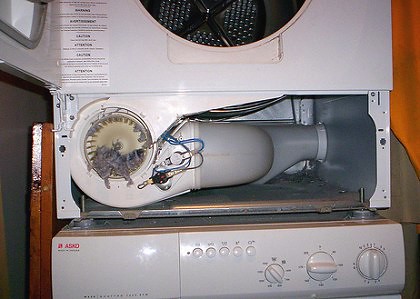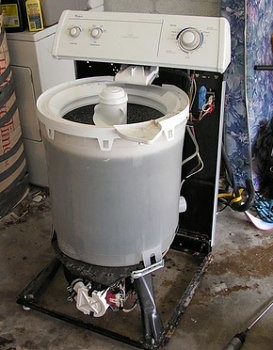Home-Tech: Washers & Dryers-3
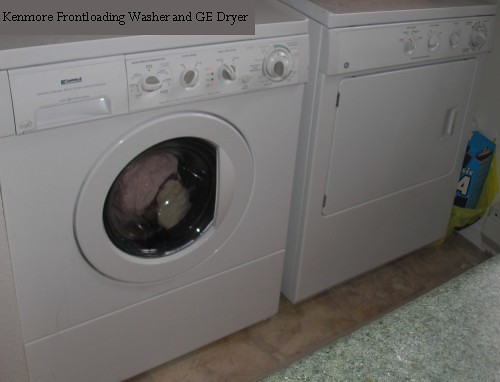
In the end, we opted for the recycled washer-dryer combo. This allowed us to get exactly what we want for a mere $450 (for the pair). This meant a Kenmore front-loading washer and a GE dryer. I confess I made a fairly dumb mistake (because I was too overjoyed at my good fortune in finding such a cheap pair of machines). My mistake was that, had I actually bought a matching pair, I would have had "kidnapping doors"* on the units, which is very handy for transferring clothing. Kidnapping doors are simply doors that open on opposite sides, and it's common now for non-stacking units to have such doors.
I was curious about the age of the units, which I had likewise neglected to check when I was at the store. The washer was manufactured in 2002, while the dryer is a '99. I know that the part of appliances that usually fails first is the electric motor—indeed, it makes sense that that would be the weakest part of any tool. I'm anxious to find out how long the motors last on these models and if they were replaced as part of the recycling process.
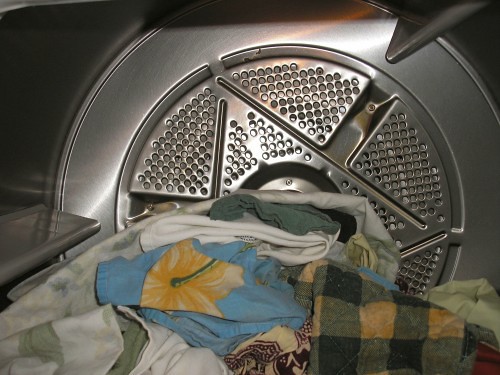
The GE has both the option of timed drying and "dryness selection," in which the operator can have the machine estimate the moisture of the clothes (based on the humidity of the exhaust). One thing to remember with a front loading washing machine is that the clothes require far less time to dry than is the case with the toploader. So you really ought to err on the side of less time in the dryer.

UPDATE: Soon after writing this we noticed there are holes drilled in the edge of the door that allow one to rotate it 180%. This, naturally allows one to have "suicide doors" on the units. You pop the bungs, or hole stoppers, or corks (whatever you want to call them) and unscrew the door, then mount it into those holes. It's really obvious.
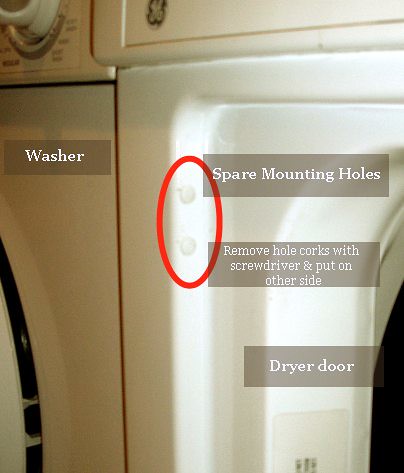
*kidnapping doors: on 4-door sedans, a combination of forward doors hinged on the forward edge, and rear doors hinged on the rear edge (example). The rear doors are called "suicide doors" because they are so dangerous (if you are getting out of the car and a passing car accidently hits the door edge, it will slam the door shut on you; likewise, children playing with the door latch can accidently open the door while the car is moving, causing the wind resistance to yank the door open). "Kidnapping doors" are so called because, on some models (like this 2005 Jeep Gladiator) there is no central pillar, so you could easily drag a victim kicking and screaming into your car.

